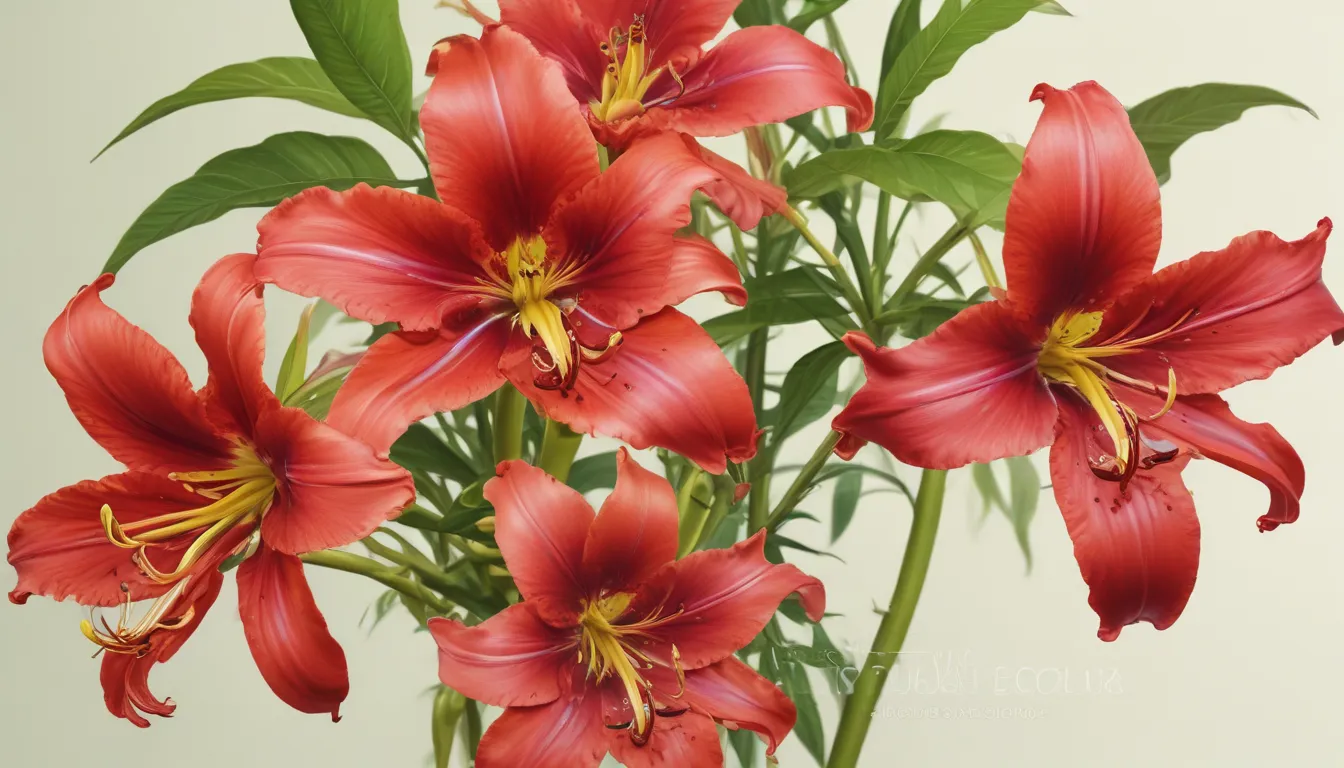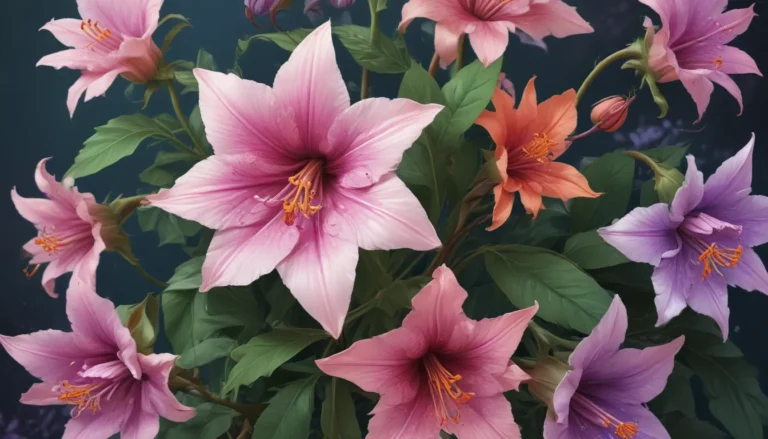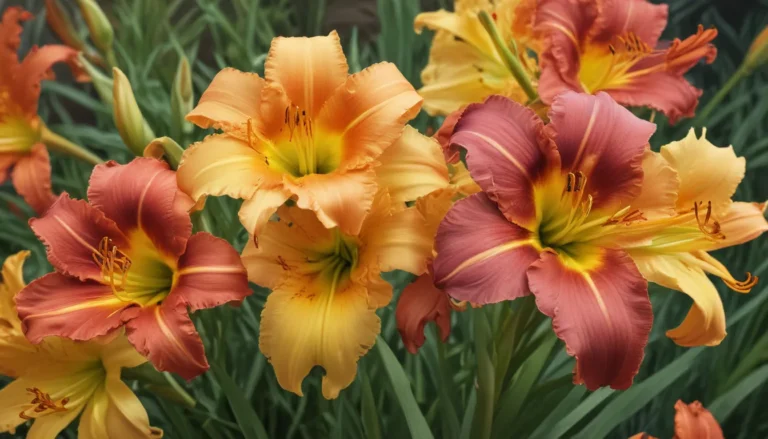The pictures we use in our articles might not show exactly what the words say. We choose these pictures to make you interested in reading more. The pictures work together with the words but don’t take their place. The words still tell you the important facts.
Gloriosa Lily, scientifically known as Gloriosa superba, is a captivating flowering plant that hails from the tropical regions of Africa and Asia. Its vibrant colors, unique structure, and fascinating attributes have earned it a special place among plant enthusiasts and gardeners worldwide. In this article, we will unravel 18 astonishing facts about the Gloriosa Lily that will leave you in awe and inspired. From its historical significance to its medicinal uses, this plant offers much more than just its beauty. Let's embark on a journey into the enchanting world of Gloriosa Lily and discover the hidden wonders within this extraordinary plant.
Key Takeaways:
- Gloriosa Lily, native to Africa and Asia, is a stunningly beautiful flower symbolizing glory, prosperity, and is used in traditional wedding ceremonies. - This protected plant can be grown in containers or in the ground, has medicinal uses, and caution is advised due to its toxicity to pets.
Gloriosa Lily: A Stunning Beauty
The Gloriosa Lily is a sight to behold, with its vibrant red petals adorned with yellow edges, creating a fiery and captivating appearance that draws attention wherever it blooms.
Originating from Africa and Asia
These striking flowers can be found in various regions across Africa and Asia, including countries like South Africa, Kenya, India, and Sri Lanka, thriving in tropical and subtropical climates.
Known by Various Names
Due to its fiery look and climbing nature, the Gloriosa Lily goes by alternative names like Flame Lily or Climbing Lily, reflecting its striking appearance and tendency to twine around structures.
National Flower of Zimbabwe
Zimbabwe has embraced the Gloriosa Lily as its national flower, symbolizing the country's beauty and resilience, holding cultural significance and often featured in ceremonies and festivities.
Belonging to the Colchicaceae Family
As a member of the Colchicaceae family, alongside plants like colchicum and merendera, Gloriosa Lily shares common traits such as showy flowers and a corm-like structure, adding to its botanical allure.
A Resilient Perennial Plant
Once planted, the Gloriosa Lily returns year after year, blooming in the summer months, showcasing its resilience in harsh conditions and making it a popular choice for gardeners.
Medicinal Properties
In traditional medicine, various parts of the Gloriosa Lily are utilized to treat conditions such as arthritis, gout, and snake bites. However, caution is essential due to its toxic nature, emphasizing the need for medical supervision.
Pollination by Bees and Butterflies
The vibrant colors and nectar-rich flowers of the Gloriosa Lily attract bees and butterflies, playing a crucial role in pollination as these pollinators inadvertently transfer pollen while feeding on nectar.
Versatile Growing Options
Whether you have a garden or limited space, the Gloriosa Lily can be grown in containers or planted directly in the ground, showcasing its climbing prowess on trellises, fences, or even indoor pots.
Blooming Season
During late summer and early fall, the Gloriosa Lily dazzles with its breathtaking blooms, gradually unfurling its intricate flowers and adding a touch of elegance to any setting.
Impressive Height Potential
Given the right conditions, the Gloriosa Lily can tower to heights of up to 6 feet, showcasing its long, slender stems that climb upwards, showcasing its magnificent blooms at eye level.
Allure in Cut Flower Arrangements
The remarkable beauty and extended vase life of the Gloriosa Lily make it a sought-after choice for floral arrangements, injecting drama and vibrancy into bouquets and displays.
Seed Prep Tip
To enhance germination rates, soaking Gloriosa Lily seeds in warm water for a few hours before planting is recommended, softening the seed coat and boosting successful sprouting.
Toxicity to Pets
Despite its beauty, the Gloriosa Lily poses a threat to pets, being toxic to cats, dogs, and other animals when ingested. Caution is crucial to ensure the safety of furry companions.
Symbol of Glory and Prosperity
Across various cultures, the Gloriosa Lily signifies glory, beauty, and prosperity, embodying success, accomplishment, and the realization of dreams.
Role in Wedding Ceremonies
In African and Asian traditions, Gloriosa Lily plays a significant role in wedding ceremonies, embellishing venues, bouquets, and even the bride's hair to symbolize love, passion, and a bright future.
Conservation Status
Facing threats from over-harvesting and habitat loss, the Gloriosa Lily has gained protected status in certain regions, sparking conservation efforts to safeguard this exquisite flower for future generations.
Propagation Methods
If you wish to cultivate Gloriosa Lily in your garden, you have the option to propagate from corms or seeds, leading to beautiful results through either method.
With its stunning beauty, deep symbolism, and intriguing traits, the Gloriosa Lily continues to capture the hearts of gardeners and flower enthusiasts worldwide, whether adorning gardens, wedding ceremonies, or floral arrangements. Embrace the glory of the Gloriosa Lily and let its magnificence bring joy and wonder into your world.
Conclusion
Gloriosa Lily stands out as a captivating plant with its unique features and alluring appearance. From its symbolism to its practical uses, this plant remains a source of fascination for botanists and flower lovers alike. Whether you seek to enhance your garden's allure or delve into the mysteries of nature, Gloriosa Lily stands as a remarkable plant worth exploring.
Next time you encounter a Gloriosa Lily, take a moment to admire its beauty and reflect on the astonishing facts that set this plant apart from the rest.
FAQs
- How tall does a Gloriosa Lily grow?
-
Gloriosa Lily can reach up to 8 feet in height, making it a striking garden addition.
-
Does Gloriosa Lily require a lot of sunlight?
-
Yes, Gloriosa Lily thrives in full sunlight, necessitating at least 6-8 hours of direct sunlight daily.
-
Can I grow Gloriosa Lily indoors?
-
Gloriosa Lilies can be grown indoors but require a sunny location with ample sunlight and well-draining soil.
-
How often should I water Gloriosa Lily?
-
Moderate watering is essential for Gloriosa Lily. Water the plant when the top inch of soil feels dry, avoiding overwatering to prevent root rot.
-
Are Gloriosa Lilies poisonous?
-
Yes, Gloriosa Lilies are toxic if ingested, requiring caution around children and pets.
-
Can I propagate Gloriosa Lily from seeds?
-
Yes, Gloriosa Lilies can be propagated from seeds. Soak the seeds in warm water for 24 hours before planting to enhance germination.
-
How long does it take for Gloriosa Lily to bloom?
-
Gloriosa Lilies typically take 10-12 weeks to bloom from planting.
-
How long does Gloriosa Lily’s blooming season last?
- The blooming season of Gloriosa Lily spans from late spring to early fall.
In conclusion, the Gloriosa Lily remains a botanical gem with its splendor and unique characteristics, enriching gardens and ceremonies with its beauty and symbolism. Explore the wonders of the Gloriosa Lily and embrace the joy it brings into your surroundings.






